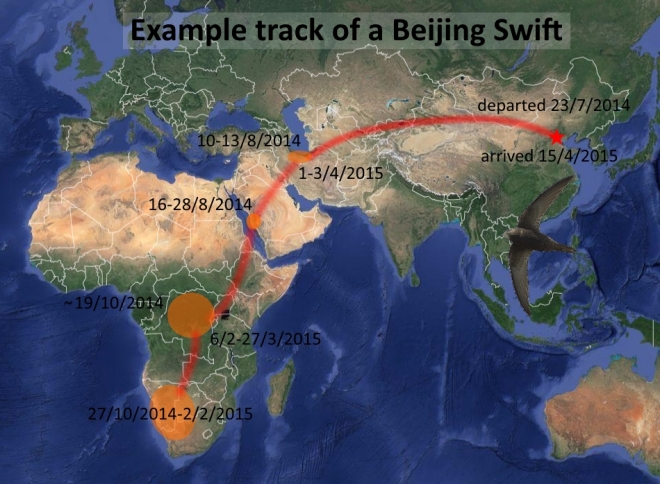 El virus del Nil Occidental (o West Nile Virus, WNV) es troba sobretot en aus i pot infectar humans a través de les picades de mosquit. En principi, el risc de mort és baix en adults sans i nens, i acostuma a passar com una malaltia lleu amb símptomes similars als d’una grip. A Catalunya i Espanya s’han trobat anticossos d’aquest virus en humans, però no s’ha aïllat el virus. Els anelladors, és clar, som un dels grups de risc de ser infectats.
El virus del Nil Occidental (o West Nile Virus, WNV) es troba sobretot en aus i pot infectar humans a través de les picades de mosquit. En principi, el risc de mort és baix en adults sans i nens, i acostuma a passar com una malaltia lleu amb símptomes similars als d’una grip. A Catalunya i Espanya s’han trobat anticossos d’aquest virus en humans, però no s’ha aïllat el virus. Els anelladors, és clar, som un dels grups de risc de ser infectats.Linke i col.laboradors van aprofitar dos congressos d’anelladors Alemanys i Austríacs per analitzar la presència d’aquest virus en 137 mostres de sang. Van trobar tres casos positius, tot i que dos d’ells sembla clar que van infectar-se en viatges a països on el virus és endèmic. El tercer cas tampoc és del tot segur, ja que es sospita d’una reacció creuada amb altres flavivirus. En resum, els autors de l’estudi llencen un missatge tranquil.litzador, tot i que adverteixen que cal prendre precaucions. La via principal d’infecció són els mosquits però, diuen els autors, també es pot transmetre a través dels excrements, saliva i sang dels ocells. En els enllaços que venen a continuació es pot trobar més informació sobre aquest virus.
Agraïments: A Jordi Figuerola (EBD, CSIC) per donar-me el seu punt de vista sobre l'article (les possibles imprecisions son meves).
Links:
Informació general (Link 1, Link 2).
Informació concreta de Catalunya i resta de la península (Link 1, Link 2, Link 3, Link 4, Link 5, Link 6).
> Linke, S., et al. (2008) Assessing the exposure of German and Austrian bird ringers to West Nile virus (Flavivirus) and evaluating their potential risk of infection. J. Ornithol. 149:271–275.
Photo by James Gathany / CDC (Wikipedia)
------------------------ ESPAÑOL ---------------------------------
Virus del Nilo Occidental: un estudio en anilladores
 El virus del Nilo Occidental (o West Nile Virus, WNV) se encuentra sobre todo en aves y puede infectar a los humanos a través de las picaduras de mosquito. En principio, el riesgo de muerte es bajo en adultos sanos y niños, y acostumbra a ser considerado como una enfermedad leve con síntomas similares a los de una gripe. En Cataluña y España se han encontrado anticuerpos de este virus en humanos, pero no ha sido aislado el virus. Los anilladores, claro está, son uno de los grupos de riesgo, pudiendo ser infectados.
El virus del Nilo Occidental (o West Nile Virus, WNV) se encuentra sobre todo en aves y puede infectar a los humanos a través de las picaduras de mosquito. En principio, el riesgo de muerte es bajo en adultos sanos y niños, y acostumbra a ser considerado como una enfermedad leve con síntomas similares a los de una gripe. En Cataluña y España se han encontrado anticuerpos de este virus en humanos, pero no ha sido aislado el virus. Los anilladores, claro está, son uno de los grupos de riesgo, pudiendo ser infectados.Linke y colaboradores aprovecharon dos congresos de anilladores, Alemanes y Austríacos, para analizar la presencia de este virus en 137 muestras de sangre. Encontraron tres casos positivos, aunque dos de ellos parece claro que se infectaron durante viajes a países donde el virus es endémico. El tercer caso tampoco es del todo seguro, ya que se sospecha de una reacción cruzada con otros flavivirus. En resumidas cuentas, los autores del estudio lanzan un mensaje tranquilizador, aunque advierten que hay que tomar precauciones. La vía principal de infección son los mosquitos, pero sin embargo, dicen los autores, también se puede transmitir a través de los excrementos, saliva y sangre de los pájaros. En los enlaces que adjuntamos a continuación se puede encontrar más información sobre este virus.
Agradecimientos: A Jordi Figuerola (EBD, CSIC) por darme su punto de vista sobre el artículo (las posibles imprecisiones son mías).
nformación concreta de Cataluña y resto de la península (Link 1, Link 2, Link 3, Link 4, Link 5, Link 6).
Foto by James Gathany / CDC (Wikipedia)

















































































.jpg)

0 comentarios:
Post a Comment